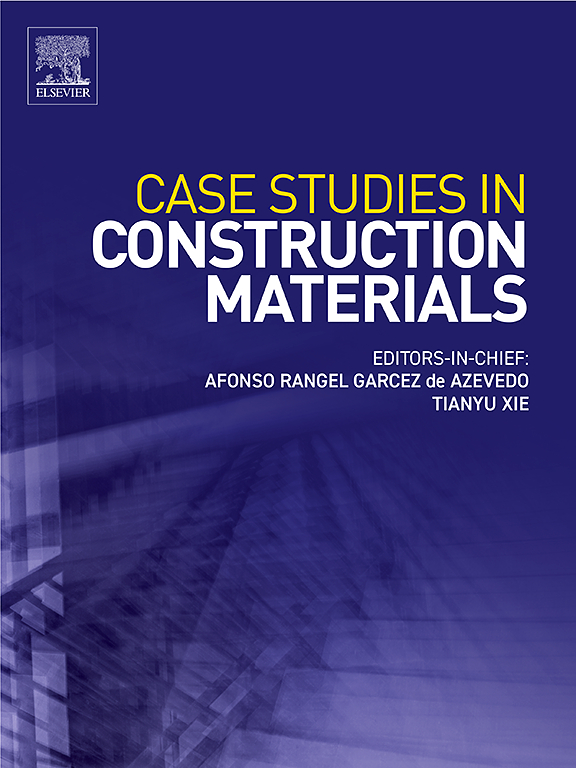Strength deterioration mechanism of horizontal stratified cemented tailings backfill under uniaxial compression
IF 6.5
2区 工程技术
Q1 CONSTRUCTION & BUILDING TECHNOLOGY
引用次数: 0
Abstract
Horizontal stratified cemented tailings backfill (SCTB) inevitably appears in the underground stope. Exploring the mechanical characteristics of horizontal SCTBs and explaining the strength deterioration mechanism of horizontal SCTBs is essential for the strength design of backfill. In this study, experiments were used to investigate, on a macro-scale, the mechanical characteristics of horizontal SCTBs with varying filling interval time. Numerical simulations were utilized to explore the primary elements determining the strength of horizontal SCTBs from the micro-scale. The results show that, at the macro-scale, the interval time has an impact on the samples’ mechanical properties by affecting the stratified surface’s initial width. The change in the stratified surface’s initial width leads to a change in the stratified surface’s stiffness, which affects the mechanical properties of the sample. At the micro-scale, neither the stratified surface’s bonding strength nor its friction coefficient significantly affects the mechanical properties of horizontal SCTBs. The monti-form bulges with different heights reduce the stratified surface’s stiffness. Axial stress causes microcracks to form easily close to the stratified surface, destroying the sample’s integrity and reducing SCTB’s strength. The stiffness and number of stratified surfaces are the key variables impacting the mechanical properties of the horizontal SCTBs.
水平层状尾砂胶结充填体单轴压缩强度劣化机理
水平层状胶结尾砂充填体在地下采场不可避免地会出现。探索水平SCTBs的力学特性,阐明水平SCTBs强度劣化机理,对充填体强度设计具有重要意义。在宏观尺度上,通过试验研究了不同充填间隔时间下水平SCTBs的力学特性。采用数值模拟的方法从微观尺度上探讨了决定水平SCTBs强度的主要因素。结果表明,在宏观尺度上,间隔时间通过影响层状表面初始宽度对试样的力学性能产生影响。层状表面初始宽度的变化导致层状表面刚度的变化,从而影响试样的力学性能。在微观尺度上,层状表面的结合强度和摩擦系数对水平scbs的力学性能都没有显著影响。不同高度的不规则凸起降低了层状表面的刚度。轴向应力导致层状表面附近容易形成微裂纹,破坏样品的完整性,降低SCTB的强度。层状面刚度和层状面数是影响水平scbs力学性能的关键变量。
本文章由计算机程序翻译,如有差异,请以英文原文为准。
求助全文
约1分钟内获得全文
求助全文
来源期刊

Case Studies in Construction Materials
Multiple-
CiteScore
7.60
自引率
19.40%
发文量
842
审稿时长
63 days
期刊介绍:
Case Studies in Construction Materials provides a forum for the rapid publication of short, structured Case Studies on construction materials. In addition, the journal also publishes related Short Communications, Full length research article and Comprehensive review papers (by invitation).
The journal will provide an essential compendium of case studies for practicing engineers, designers, researchers and other practitioners who are interested in all aspects construction materials. The journal will publish new and novel case studies, but will also provide a forum for the publication of high quality descriptions of classic construction material problems and solutions.
 求助内容:
求助内容: 应助结果提醒方式:
应助结果提醒方式:


